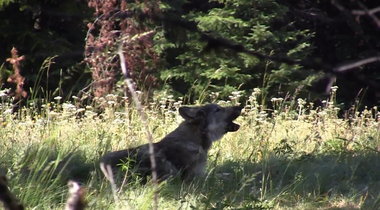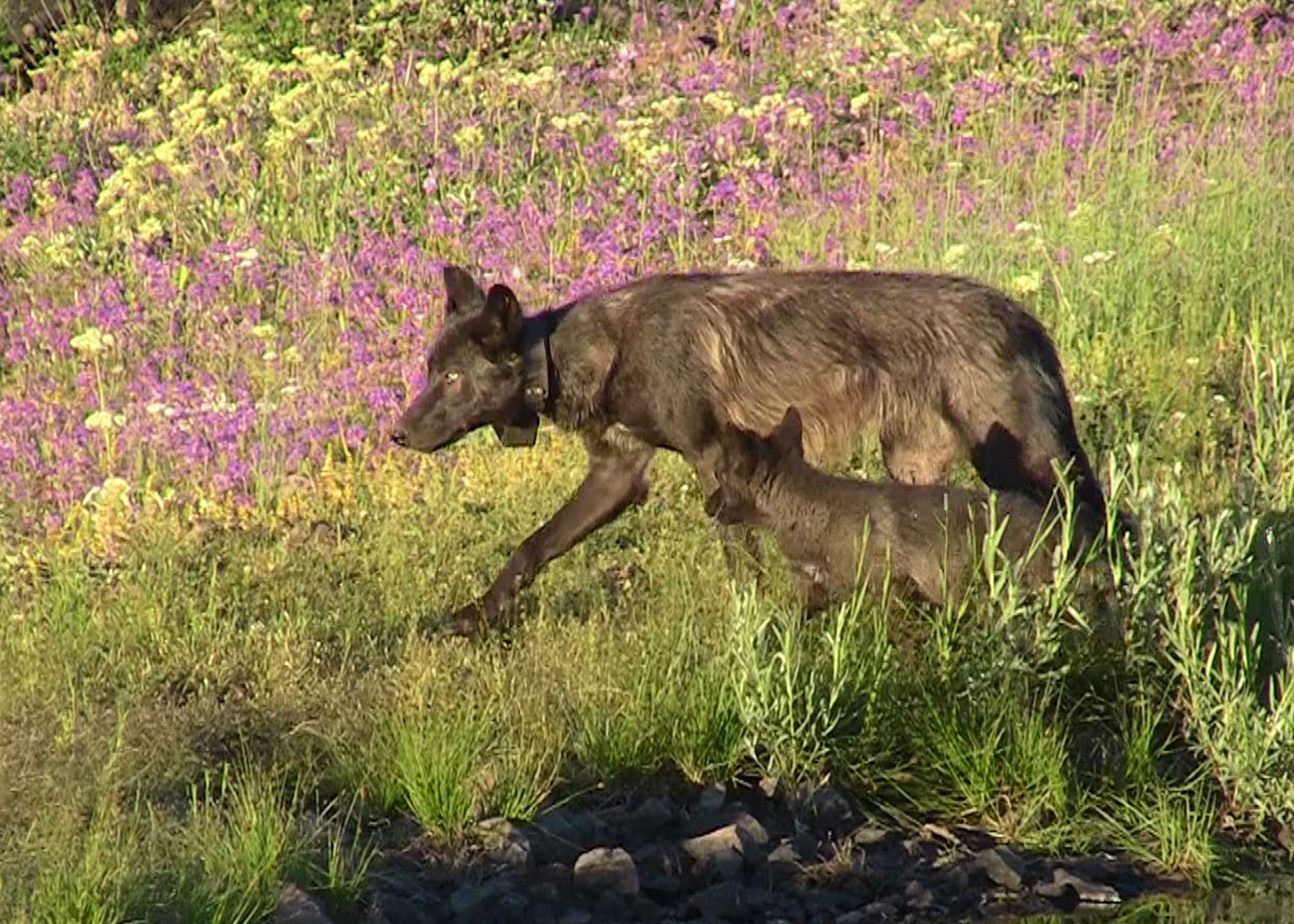Late last month, the Oregon Department of Fish and Wildlife announced that it would shoot up to four wolves in the Harl Butte pack. Again. In August, following conflicts between wolves and livestock in the same area, the Department killed another four wolves from the same pack.
The Harl Butte territory is no stranger to conflicts between wolves and livestock. This is the same area formerly occupied by the Imnaha pack along the Imnaha River near Oregon’s border with Idaho. The Imnaha pack was wiped out last year by the Department, after numerous other kill orders over several years.
It is important to keep in mind that the number of wolf/livestock conflicts remains incredibly low when compared to livestock animals lost to coyotes, cougars, and wild dogs. It shrinks to insignificance when compared to the number of animals that die from the weather, disease, traffic accidents, or good ole-fashioned cattle rustling. Regardless, killing wolves remains the persistent agenda of numerous commercial lobbyist groups in the Pacific Northwest, and our Fish and Wildlife Departments all too often oblige.
It is also critical to remember that ranchers are getting compensated, at full market value, for any livestock they lose as long as they show they attempted to proactively reduce conflict between wolves and livestock. That generous cash program is subject to ongoing investigations of questionable payments being made to some of these producers.
The State’s wolf killing is designed to prevent future depredations, but we are experiencing livestock losses repeatedly in the same areas. The same story is playing out in Washington, where the State has killed wolves three separate times at the behest of the same livestock producer in the same region. The question remains: Why are we forced to kill wolves in the same areas, again and again?
The Cattlemen’s Associations contend it is because the wolves have developed a taste for beef and teach the ways of the burger to their pups. But Oregon and Washington continue to wipe out entire packs. Depredations resume the next year when new wolves move into the vacated habitat.
 It is not because beef is delicious that wolves are targeting cows. Pervasively across the West there are areas where wolves and livestock are in close proximity without conflicts. If wolves prefer beef, there would be conflicts any place where wolves and livestock interact. But this is not the case.
It is not because beef is delicious that wolves are targeting cows. Pervasively across the West there are areas where wolves and livestock are in close proximity without conflicts. If wolves prefer beef, there would be conflicts any place where wolves and livestock interact. But this is not the case.
Instead, it appears to be a product of there being too many cattle on the landscape. Rob Klavins, a close friend and employee for Oregon Wild, lives out in this Harl Butte/Imnaha area where he and is wife run the Barking Mad B&B (check it out if you’re ever near Enterprise). He maintains a series of wildlife cameras on public lands where Harl Butte and Imnaha wolves were regularly seen. When talking with him about this recent kill order, he shared that in reviewing his tapes, of all the different wildlife that pops up on his motion activated cameras, well-over 90% are cows.
Is it that wolves are eating cows because bovine are the only viable prey species left in that area? When cattle are intensively grazed in the specific areas, they drive out the deer and elk that otherwise might comprise the majority of a wolf’s diet. This also drives the herds of deer and elk down into agricultural lowlands, where they munch on farmers’ fields. This can lead to frustrated farmers poaching loads of elk. It seems likely there are simply too many cattle grazing in these particular areas during the grazing season, which is driving out other game.
Now I know you are saying to yourself, “wait, commercial agriculture overusing a resource? This would never happen.” But just maybe this is what is occurring.
Regardless of why wolf-livestock conflict continues in these particular areas, shooting wolves in response to depredations simply is not a long-term solution. It is a money-pit and bad policy. Every year our Fish and Wildlife Departments will continue to shoot wolves, spending tens and sometimes hundreds of thousands of taxpayer dollars each kill order, in response to a few dead cows, only to see it recur time and time again.
And yet the Oregon Department of Fish and Wildlife is going broke, or is already broke. They increasingly rely on general fund taxpayer dollars. The Department is coming to the conservation community with its hat in its hand. The conservation community works with the Department to recover habitat and protect non-game species that include many of the imperiled species in the state on the verge of extinction. The conservation community wants to work with the Department on these species.
However, Oregon Department of Fish and Wildlife spends 2% of its funding on non-game species, even though these comprise 88% of the species in the state. Only three of the agency’s 1,200-person staff work on non-game species. Their requests for money remind me of National Lampoon’s Christmas Vacation, where cousin Eddie promises to get you something real nice with the Christmas gift money he borrows from you, but you know that gift is going to be a hastily dug trench filled with dead carnivores.
It is past time for the Oregon Department of Fish and Wildlife and its Commission to deal with this issue in a direct manner, instead of bending like a willow to interest groups. But this will not happen on its own! Oregon’s wildlife needs strong leadership from Governor Kate Brown. She appoints the Fish and Wildlife Commission that makes the calls on these issues, and she needs to send a clear message to this floundering agency and its Commission.
Give Governor Brown a call: (503) 378-4582. If you like wolves, tell her to stop killing them. If you decry government waste and hate to watch the Department endlessly dump public money into a problem of its own creation that it has no intention of solving, give her a ring. If you enjoy the film Christmas Vacation, let her know. Governor Brown was just awarded the Environmental Champion of the Year Award by the Oregon League of Conservation Voters. Let’s see if she will put her money where her mouth is.



